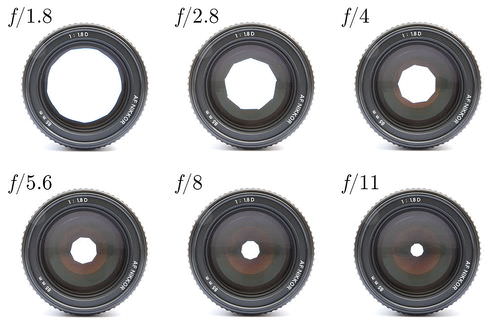2.2: Shutter Speed and Aperture
- Page ID
- 3145
This lesson will help you understand Shutter Speed & Aperture and how these two are related. Start with the explanations in Get the Basics to build understanding. Then, deepen your learning with additional online resources in Explore. The additional online resources are essential to understanding shutter speed & aperture! When you respond to the questions and prompts in Record Your Findings, be sure to include information you learned from the additional online resources.
Get the Basics
Shutter speed and aperture are two of three basic elements of photography, often referred to as the exposure triangle. The third is ISO, a measure of how sensitive your camera's sensor is to light. The term ISO comes from film photography. Film has ISO ratings that indicate sensitivity to light. The lower the ISO, the less sensitivity. The higher the ISO, the greater the sensitivity. Digital cameras don't use film, but some digital cameras have ISO settings that simulate film ISO ratings. For this basic course, you're going to concentrate on shutter speed and aperture.
Shutter speed is just that – how quickly the camera’s shutter opens and then closes when shooting a photo. The longer the shutter is open, the more light it lets in, which is better for low light settings. However, longer shutter speeds can cause images to be blurry from accidentally moving the camera. Shorter shutter speeds are good for capturing things that are moving. Be careful, though. Shorter shutter speeds decrease the amount of light entering the lens and work better in bright light settings.
Aperture is the opening in a camera lens that can be made bigger of smaller to let more or less light through the lens. Aperture is measured in f-stops.
How open or closed the aperture is affects the depth of field displayed in an image. Depth of field is how focused the image is from front to back. A wide-open aperture results in a shallow depth of field. An example of shallow depth of field is an image of an insect that is in focus but the background is blurry. A closed-down aperture results in a large depth of field. An example of large depth of field is a landscape with everything from the foreground to the background in focus.
Explore
Learn about shutter speed at Introduction to Shutter Speed in Digital Photography from Digital Photography School:
http://digital-photography-school.com/shutter-speed/
Learn about aperture and depth of field at Understanding Your Camera: Lens Aperture Demystified from Martin Pot – Photography Blog: http://martybugs.net/blog/blog.cgi/learning/Lens-Aperture-Demystified.html
Look at photo examples of depth of field at Meaning of Depth of Field from Second Picture:
http://www.secondpicture.com/tutorials/photography/meaning_of_depth_of_field.html
Record Your Findings
- When would you use a slower shutter speed?
- When would you use a faster shutter speed?
- Describe the resulting depth of field when using a wide-open aperture.
- Describe the resulting depth of field when using a small aperture.
References
| Image | Reference | Attributions |
|---|---|---|
 |
[Figure 1] |
Credit: KoeppiK; June 10, 2012 Source: http://commons.wikimedia.org/wiki/File%3ALenses_with_different_apetures.jpg |


